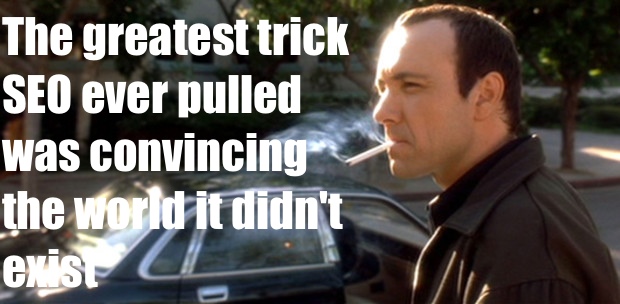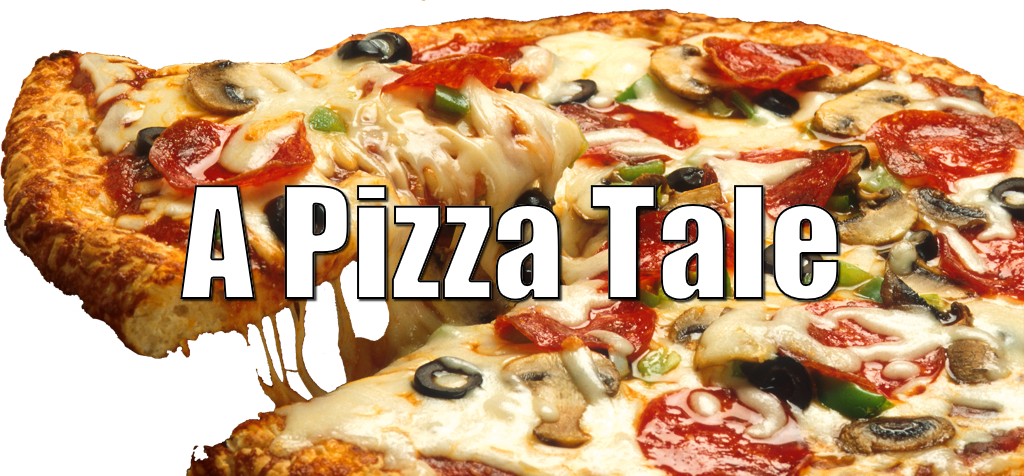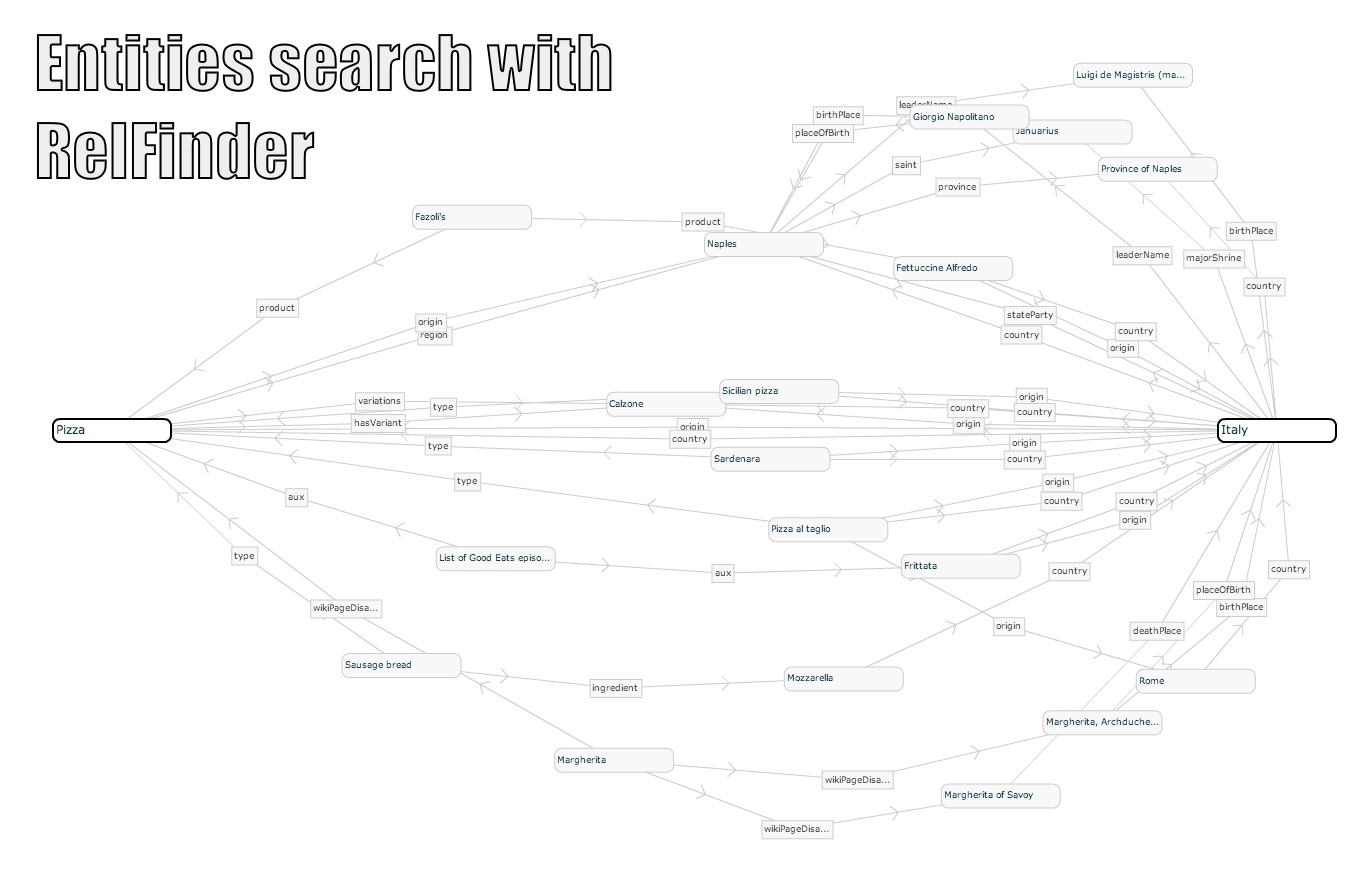A New SEO Approach to Content Strategy
Once, an SEO that I esteem told that the best SEO is the invisible one, and I firmly believe that he – Adam Audette – was completely right.

SEO is technical marketing, which is the same as saying it is a discipline of marketing that uses the technicalities specific of the medium used as the channel of our promotion efforts (search), and so obtaining the best results for the marketed products. If you reflect, that is a valid definition for every marketing discipline, online and offline.
The ultimate objective is winning the audience, not the search engines’ bots, and while the “ranking factors” are important, still they are just tools for obtaining our objective, not the objective itself.
Real SEO, the one with a audience in mind and its data-informed attitude, is what should guide us throughout the process of creating a content strategy that will make us win not just in search – and that’s the magic – but also in social and email marketing.
Let’s say we have a new client. His name is Mario, and he runs a quite new small pizza chain in New York. The problem is that only in Manhattan there are at least 3,089 pizzerias, as it is reported by Yelp.
How to become visible? How to be found on Google? How to build cohorts of brand evangelists?
Apart from all the local-search-related stuff, which I won’t talk about here (check this post by David Mihm instead, if you’re interested), what we would do in the past is discuss how to rank for “Pizzas in New York” for the home page, and for “Pizza in Tribeca,” “Pizza in the Theater District,” “Pizza in NOLITA”… for the internal pizzerias’ pages, and we would have finished creating optimized pages just for those keywords. Quite probably, we would have created as many pages for middle and long tail keywords as the keyword research suggested.
That would have worked, especially if we could sustain the on-page optimization with inbound links.
But now that kind of SEO is not possible anymore:
- Because Google is not showing us any keywords, due to (not provided), we don’t really know what keywords are the best-converting ones (or, for knowing them, we must spend an important budget in AdWords);
- Because a site with ad hoc created pages for keyword optimization doesn’t attract natural links, the link building would have been reduced to low-quality-food-for-penguins backlinks;
- Because, with Hummingbird, Google is reducing the effectiveness of for-long-tail-keywords created pages because it is simplifying long tails in more understandable and short queries.
This last point is extremely important, because it implicitly tells us that we don’t need to create thousands pages optimized just for SEO reasons, but only the ones that really are needed, taking care that those pages are targeting a set of well identified concepts and semantically related. In short: better content that answers to users’ needs.
Entities, Search Entities and the role of Hummingbird
We should stop thinking of creating a content strategy for our site based on keywords per se, but on topics. And when we talk about topics, we talk about entities and search entities:
- Entities are physical things, such as people, books, movies, planets, but also concepts like art movements or field of studies;
- Search entities, instead, are elements strictly related to how Google works. For instance: queries, documents responsive to the queries, search sessions, anchor text et al.
Now … let’s think about the Mario’s site. What entities are topically related to his business?
We can use tools like the Freebase APIs, Yahoo Glimmer, Bottlenose and RelFinder in order to get ranked entities.
Then we should think about the ontology relations between the entities we have discovered in order to create a structure over which we will build our site (and related content strategy).
Doing so, we will find out that the Mario’s site is not just about pizza.
It is indeed about pizza, but pizza is a sub-entity of “bread,” and it can be classified with thin, thick or regular crust. Pizza can be made of organic products (water, flour, yeast, tomato and mozzarella), and as many variations exist as there are wild imaginings of the pizzaiolo.
You can easily see how this can suggest a very large set of content to make our site relevant:
- recipes (and related recipe schema.org);
- infographics (with the passive link building opportunities it offers with its embed code);
- videos (opening up the opportunity of video marketing);
- guides (evergreen content that can make us rank for in-depth articles or be linked by Wikipedia kind of sites);
- Q&A;
- UGC (the pizzas Mario’s clients invented);
- informational facts as – for instance – can be the nutrition facts related to pizza.
Our entity research, then, will have also shown us other connected entities, such as story (the history of pizza) and geography (Naples, but also the other Italian regional versions of the pizza, as the Roman one).
We should not forget, though, that Mario’s objectives are having people coming to his restaurants and being found for queries like “pizza in Tribeca.”
Instead of creating a page with SEO optimized text that looks like “Our pizzeria in Tribeca is open the 24th. If you are in Tribeca, come and enjoy our 1000 different kinds of pizza whenever you want in our pizzeria in Tribeca!” (le sigh), we should create a hub of content related to:
- Tribeca (the “where”)
- The restaurant
- Opening times (the “when”)
- Direction (the “how”)
- Specialties (the “why”)
- The people, meaning both the employees and the clients, one group is local but also tourists from all the world (the “who”)
In this specific case, doing audience research in order to have a very clear knowledge of the demographics of the people we want to target, their tastes, how they talk and what they like and dislike. This is fundamental, because knowing the personas we want to target, combining that knowledge with the entity search we have previously done and, finally, mapping the keywords related to the entities we will create content about.
Doing so, we will be able to create “microsites” inside our main Mario’s Pizza Chain website, very strongly semantically related to the contexts – geographical, topical, human – that we want to target.
Microsites that, ultimately, will not just be more relevant for Google, both in terms of local and universal search, but also, and especially, more interesting for the users, hence with bigger opportunities to be shared and linked.
And not just that! All that content will make creating a cross channel content strategy very easy and natural, able to flow from the site to social media profiles and vice versa, creating conversations in a more natural and effective way.
This methodology, then, is able to open us to new content ideas, which may link online and offline marketing, creating even stronger relevancy, authority and branding. For instance, Mario could offer free pizza slices to the fans (and celebrities) walking the red carpet of the Tribeca Film Festival, while obviously reporting this unconventional marketing action on his site and social media profiles.
To conclude, the audience analysis will probably have shown us how foreign tourists are an interesting percentage of the potential client base of the Mario’s Pizza Chain, hence we could also start thinking “glocally,” creating specific versions of his site in other languages.
As you can see, moving away from the old-school SEO strategy that’s based only on keyword targeting, and embracing the philosophy behind the Internet of Things, we can create a site and an online presence that wins, thanks to the creativity of its marketing, using the technicalities of SEO only as instruments.
If you explain all this to your Mario, involving him all along the strategy-creation process (who better knows his audience and his business entities better than him?), then not only won’t he stress you too much about keywords’ ranking, old useless SEO copywriting et all, but he will be more keen to accept a more holistic and inbound approach to marketing for his website.
About the Author
Gianluca Fiorelli is an independent Inbound Marketing consultant, a Moz Associate and an official blogger for Stateofdigital.com.
Gianluca is a very active member of the Search Marketing community, and you can find him blabbing, ranting and helping others on Twitter and Google Plus.
Want to learn more about SEO content best practices? Take the SEO Copywriting Certification training now!




Definitely a valid point. The structured markup is what Google wants people to use. The nice thing is by getting it implemented now, you’re still well ahead of 99% of the competition who has yet to implement it!
Hello Gianluca Fiorelli,
Really nice SEO approach to content :)
Nice content strategy, understanding the Search Entities and the role of Hummingbird is very important for SEO :)